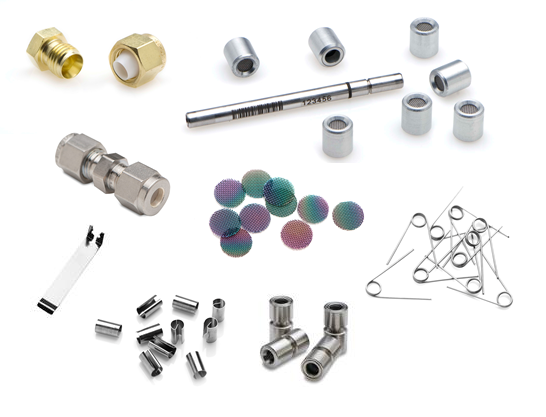首圖:

多圖: {multiple_file}
內容:
商品型號:
商品規格:
Select below for further details and purchasing options
 |
Brass caps | For long-term storage (or transport) of conditioned or sampled tubes, two-piece metal storage caps fitted with one-piece PTFE ferrules (¼-inch or 6 mm i.d.) must be used. Storage caps – For method-compliant storage These caps are recommended by international standard methods such as US EPA Method TO-17, ASTM D6196 and EN ISO 16017, and have been validated for storage of sampled/blank tubes for up to 27 months. The caps meet a stringent cleanliness specification and tight manufacturing tolerances. For tubes fitted with TubeTAG, an extended ‘TubeTAG-ready’ long-term storage cap must be used on the tagged end of the tube. |
 |
Aluminium push-on caps | Aluminium push-on caps with O-ring seals are convenient for short-term storage of cleaned or sampled ¼-inch tubes – for example, when they are being analysed almost immediately after sampling. *Note that push-on caps should not be used for long-term storage or transport of tubes. |
 |
Diffusion caps |
The diffusion cap replaces the storage cap at the sampling (grooved) end of the TD sample tube for the duration of the exposure/monitoring period. The storage cap at the other end of the tube is left in place.Diffusion caps are usually made of clean, anodised aluminium. However, we can also supply stainless steel versions for use in more corrosive atmospheres if required.For traceability purposes, diffusion caps can also be supplied etched with a unique serial number. |
 |
DiffLok caps |
Tubes on all Markes’ TD autosamplers are sealed with unique DiffLok™ caps, which simply push onto both ends of every tube. DiffLok caps use Markes’ patented diffusion-locking technology (also used in SafeLok tubes), to preserve sample integrity by preventing both analyte loss and artefact ingress. DiffLok caps maintain sample integrity throughout the analytical sequenceDiffLok caps remain on the tubes throughout an analytical sequence. This preserves sample and tube integrity before and after desorption, but at the same time also simplifies the automatic TD process, thus optimising uptime and productivity. DiffLok caps have been field-proven to seal sampled and blank tubes much more effectively than alternative PTFE push-on caps incorporating PTFE-coated O-rings. |
 |
TubeMate tool |
TubeMate is used to insert (and remove) the gauze-retaining spring in metal tubes. Once the spring is partially inserted into the end of the tube, TubeMate grips the spring and enables it to be twisted into place with very little effort. |
 |
Penclips | Penclips attach to the groove on 3½-inch metal tubes so that they can be easily fastened to a lapel or pocket for personal monitoring. |
 |
Gauze-retaining springs |
Gauze-retaining springs are used in metal tubes to ensure the rear sorbent-retaining gauze remains positioned correctly on top of the sorbent bed. |
 |
CapLok™ tool |
Long-term storage caps must be correctly tightened in order to ensure a leaktight seal. Caps are recommended to be tightened ‘finger-tight plus quarter turn’. |
 |
Sorbent-retaining gauzes |
Markes' sorbent-retaining gauzes are manufactured to precise tolerances to ensure that they correctly fit the front groove of metal (stainless steel or inert-coated stainless steel) tubes. |
 |
Tube shipment boxes |
Markes International provides two types of lightweight, robust cardboard storage boxes for convenient shipment of 3½″ steel or glass sorbent tubes:
|
 |
Springs for glass tubes | Torsion springs are used in glass tubes to ensure that the rear plug of quartz wool remains positioned correctly on top of the sorbent bed. They can also be used during direct desorption of materials to secure the sample in place centrally in the heated zone of the tube. |
 |
PTFE tube inserts |
If direct desorption in an empty tube could cause irreversible contamination of that tube, its best to place the sample in a disposable tube liner. Markes’ direct desorption liners are made from PTFE and designed for use with stainless steel tubes. They protect the tube walls and simplify sample weighing. Two types of liners are available:
|
 |
Tube connection unions |
Standard ¼-inch o.d. tubes can be connected in series using ¼-inch–¼-inch stainless steel unions fitted with the same one-piece PTFE ferrules used in ¼-inch storage caps. After sampling, the tubes are disconnected, capped and stored individually prior to analysis. |
For every TD application, our range of tube accessories are designed to make your life easier – from tools to assist with routine tube maintenance and storage, to labour-saving tube inserts for direct desorption.
商品特色:
商品說明:
加入購物車 - 購買